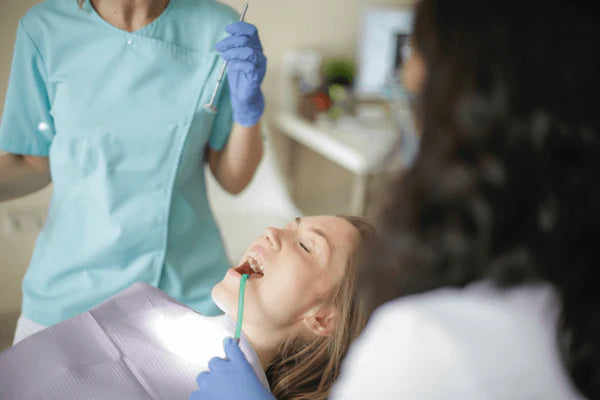Toothache and toothache are extremely unpleasant sensations that nobody wants to experience. In order to avoid periodontal disease and all kinds of dental disorders, it is advisable to maintain good oral hygiene. In addition, to relieve existing dental pain, it is necessary to take care of your teeth and reduce gum inflammation. This can be done with the help of very effective toothache treatments. Of course, a dental check-up at the dentist will be necessary, but quick relief of a pulpitis toothache will also be one of the things to do.
Here is a guide to help you understand how to best relieve a toothache and avoid possible complications.
What is toothache?
Toothache is a severe pain felt in and around the mouth. It can come from the oral cavity itself or from more distant factors such as the sinuses or the ears. There are several levels of severity: either it is temporary and mild or it becomes a toothache. In this case, the pain becomes unbearable. If the pain is too severe and lasts for more than two days or if there are other symptoms such as fever or ear pain, it is more than advisable to consult a dentist as soon as possible.
Toothache has several causes
Oral hygiene is strongly linked to periodontal disease. Good dental hygiene can prevent the following problems
White stains on the teeth
White spots are caused by a lack of mineralisation. The main cause is an overdose of fluoride. Fluoride is a fundamental trace element for the health of teeth. Above all, it allows their mineralisation and their strength in the face of aggressions such as sugary foods. Thus, an excessive intake of fluorine, through supplements and, to a lesser extent, through food, leads to the appearance of white spots. This inevitably leads to a toothache.
Bleeding gums or inflammation of the gums
Gingivitis is an inflammation of the gums. It can quickly worsen and destroy the bone supporting the teeth. It is most often caused by bacteria in plaque. Plaque is a coating that forms continuously on the teeth. If plaque is not removed by daily brushing and flossing, it can become established. Bacteria will infect the gums and teeth but also the supporting bone of the teeth. The consequence is that the teeth start to move and hurt.
Tooth loosening or tooth loss
Tooth loosening is the result of a poor attachment of the tooth to the jaw. This problem is caused by a gradual reduction in gum tissue. Normally, a healthy tooth is surrounded by tissues which ensure its maintenance. These tissues are the periodontium, i.e. the alveolar bone, cementum, gum and alveolar ligament. In the event of tooth loosening, these tissues no longer guarantee the fixation of the teeth. The tooth then becomes mobile and may even fall out if no treatment is initiated.
Accumulation of bacterial plaque
Plaque is a film that consists of a mixture of bacteria, saliva and dead cells. It can occur in all types of people. It is deposited continuously on the teeth, i.e. both during the day and at night. After brushing, it redeposits on the surface of the teeth within 24 hours. After about 72 hours, it hardens and turns into tartar. It must therefore be removed with a toothbrush and dental floss, as it encourages the development of cavities.
There are other causes of toothache. All dental problems up to chronic diseases and cardiovascular diseases can occur as a result of painful tooth decay or periodontitis and gingivitis. The best solution is to take prompt care of the teeth at the first sign of tooth pain.
Good oral health helps relieve gum pain
Are you experiencing tooth pain due to cavities? Good hygiene is necessary for good oral health. The cause of toothache and gum disease is most often poor oral hygiene. In addition to brushing your teeth, a good mouthwash is necessary to prevent or fight toothache. Indeed, dental health is a complex thing and dental problems can quickly arise when food debris has not been properly cleaned. Tooth brushing is very important for dental hygiene, but it is not complete when done alone. Tooth sensitivity and gum inflammation can then occur and your teeth and gums may suffer demineralisation.
How to have healthy teeth and avoid cavities, abscesses or bleeding gums?
Gingivitis, bacterial infection, tooth decay, sensitive teeth and gums, erosion of tooth enamel, toothache and dental pain are all periodontal diseases caused by a poorly maintained oral cavity. It will therefore be necessary to use treatment to relieve an abscessed tooth, swollen gums and bad breath.
Here are some actions to keep your teeth healthy:
If you have dental concerns, you should take care of your teeth and continue to practice good dental health habits. Toothbrushing after every meal is a must, as are interdental brushes and antiseptic mouthwashes. Cleaning teeth, cavities and dental surfaces with mouthwash is necessary for overall dental health and to relieve an unbearable toothache.
You can brush your teeth with the Y-Brush toothbrush. It is a toothbrush that brushes all the teeth and their surfaces at the same time, removing 15% more plaque than a traditional toothbrush.
We hope that this guide has helped you understand that toothache has many different origins, which vary from person to person. We also hope that you have understood that maintaining good oral hygiene is undoubtedly the best way to deal with a toothache, whatever its source.



